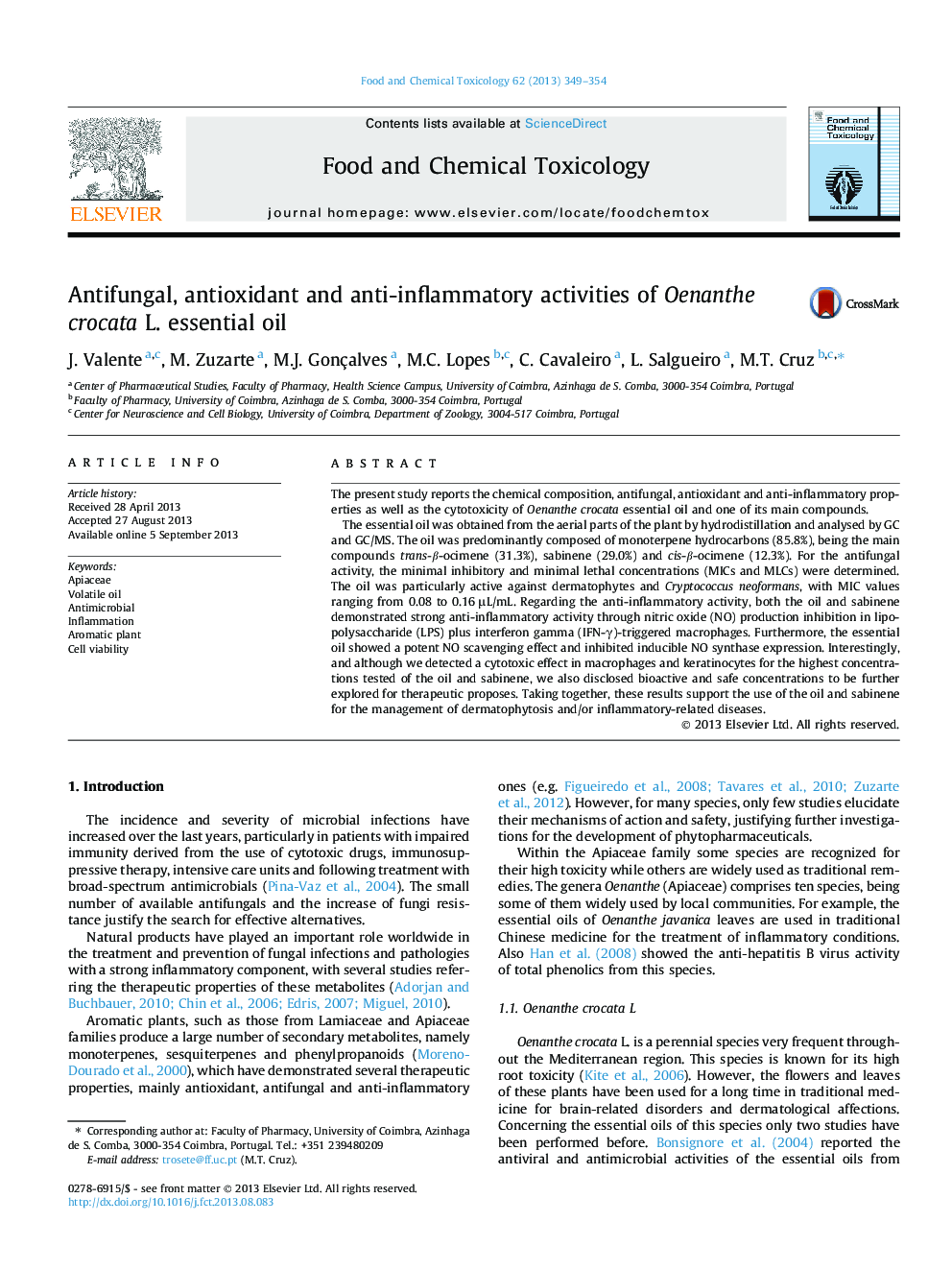| Article ID | Journal | Published Year | Pages | File Type |
|---|---|---|---|---|
| 5850365 | Food and Chemical Toxicology | 2013 | 6 Pages |
Abstract
The essential oil was obtained from the aerial parts of the plant by hydrodistillation and analysed by GC and GC/MS. The oil was predominantly composed of monoterpene hydrocarbons (85.8%), being the main compounds trans-β-ocimene (31.3%), sabinene (29.0%) and cis-β-ocimene (12.3%). For the antifungal activity, the minimal inhibitory and minimal lethal concentrations (MICs and MLCs) were determined. The oil was particularly active against dermatophytes and Cryptococcus neoformans, with MIC values ranging from 0.08 to 0.16 μL/mL. Regarding the anti-inflammatory activity, both the oil and sabinene demonstrated strong anti-inflammatory activity through nitric oxide (NO) production inhibition in lipopolysaccharide (LPS) plus interferon gamma (IFN-γ)-triggered macrophages. Furthermore, the essential oil showed a potent NO scavenging effect and inhibited inducible NO synthase expression. Interestingly, and although we detected a cytotoxic effect in macrophages and keratinocytes for the highest concentrations tested of the oil and sabinene, we also disclosed bioactive and safe concentrations to be further explored for therapeutic proposes. Taking together, these results support the use of the oil and sabinene for the management of dermatophytosis and/or inflammatory-related diseases.
Related Topics
Life Sciences
Agricultural and Biological Sciences
Food Science
Authors
J. Valente, M. Zuzarte, M.J. Gonçalves, M.C. Lopes, C. Cavaleiro, L. Salgueiro, M.T. Cruz,
